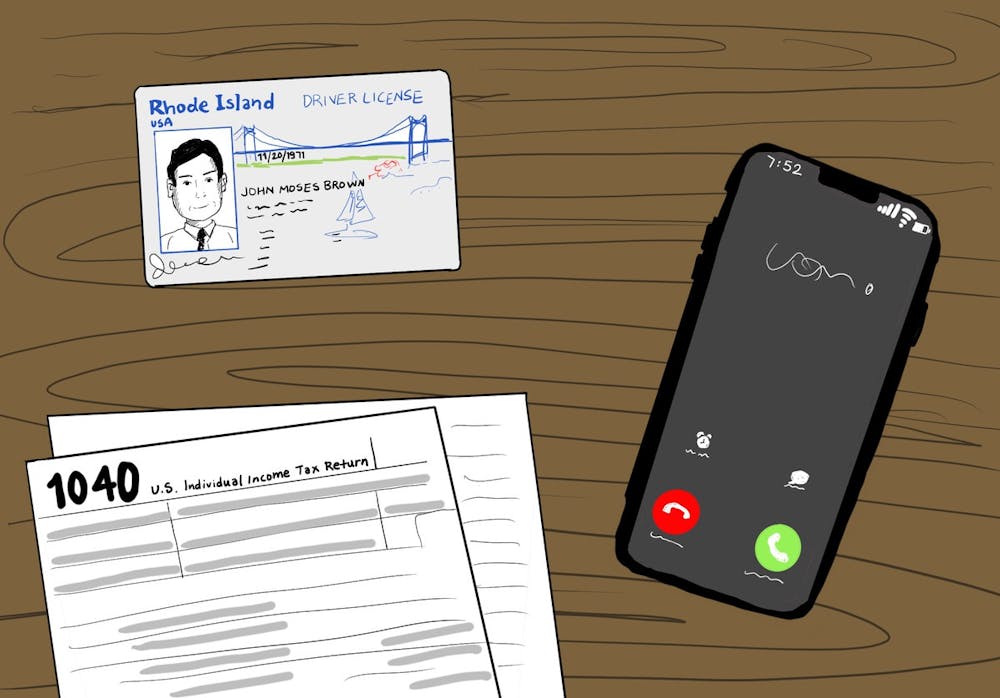Earlier this month, Students for Educational Equity, an on-campus student organization which aims to promote educational equity in Providence, unveiled their “Financial Aid Resource” website, which is aimed at helping prospective Brown applicants navigate the financial aid application process.
“Brown’s financial aid website, although it’s helpful in a lot of ways, isn’t really dedicated to helping students who are filing for financial aid on their own, without outside help,” said Niyanta Nepal ’25, co-leader of the Admissions and Access Committee, which led the website’s creation. “We thought it would be valuable to have a resource created by students, catering to that student population.”
The Financial Aid Resource website provides an overview of the various components of a financial aid application, especially the Free Application for Federal Student Aid and the College Scholarship Service profile. The site outlines the differences between the FAFSA form and the CSS profile, the various forms and documents required, which assets to document, important dates and deadlines and any additional expenses. In addition, the site offers an overview of the appeals process including tips on how to potentially increase financial aid awards.
Sydney Stovall ’25 said that she hopes increased awareness of the Financial Aid Resource site will also motivate the University to reevaluate the resources they provide to prospective financial aid applicants.
“I hope Brown as an institution will recognize that students are actively trying to hold them accountable and make sure that the work they’re doing is more equitable and more accessible,” Stovall said.
Dean of Admission Logan Powell said in an email to The Herald that he is “impressed by the initiative taken by SEE” and appreciates “their interest in making the financial aid application process more relatable to prospective students and families.”
“We must also be sure that the information they convey is accurate and up to date with Brown policies while also not duplicating the already robust information that can be found on our website,” he added. “To that end, we will continue to try to work together on our shared values of accessibility and affordability.”
The site also includes dedicated pages of information and advice for international students, Deferred Action for Childhood Arrivals recipients or undocumented students and students with special family circumstances. The circumstances covered on the website include students with separated parents, students whose families financially support individuals outside of the household, emancipated students and students with noncitizen parents.
“It was a lot of looking for the holes in Brown’s financial aid website and cross-referencing that with all the little details and technicalities on the FAFSA and CSS websites,” said Allison Stein ’25, who contributed to the website.
The bottom of every page on the website also features a video recorded by a committee member reiterating the contents of the page.
“We want to ensure that we are being as accessible as possible, down to the varying ways people receive and digest information,” Stovall said, noting that the videos, rather than pages of text, may appeal to auditory learners.
Though the Financial Aid Resource caters to the University’s financial aid application, the committee hopes it will be more widely applicable in demystifying the process for college in general.
“The Ivy League name is known to come with a certain caliber and a certain price tag,” said Nick Lee ’26, who worked on the website. “Our goal is creating a process that's very accessible and very visible to everyone.”
Members of the committee drew on their own experiences when researching and creating content for the site. Léo Corzo-Clark ’25, co-leader of the Admissions and Access Committee, said that appealing his financial aid decision from the University motivated his work on that section of the website.
“You can appeal for financial aid if you don't get enough, and that was the difference, in my case, between being able to come to Brown or not,” Corzo-Clark said. “A lot of people don’t know they can do that.”
The website offers tips and tricks also drawn from students’ personal experiences, including how to avoid getting scammed by false FAFSA websites, advice for international students to apply early to avoid logistical difficulties and how to transfer assets to help make a CSS profile more compelling.
“We wanted this resource to read like a student is writing it,” Nepal said. “We wanted to share what we realized upon going through the process ourselves.”
Nepal recalled learning how to utilize the “additional comments” sections of financial aid applications to describe how her family was supporting her grandparents and how that complicated her financial situation.
“This is information that we wish we had when we were going through the process,” Nepal said. “The site is a living document, and we’re going to edit it based on what students want to see.”
The committee welcomes feedback from visitors to the site through a Google Form. They plan to spread and advertise the site on social media platforms like Instagram and Sidechat. SEE also intends to share the tool with the group’s connections in Providence high schools and to members’ personal networks, including admissions officers they may have been in contact with during their own college application processes.
The website is part of SEE’s goal of ensuring that students from underprivileged backgrounds “have the same level of awareness” as students from “prestigious high schools,” said Ava Cloonan ’25, a contributor to the website. “We want applicants to know that people come into schools like Brown and other Ivy Leagues from a variety of high school backgrounds.”

Anisha Kumar is the senior editor of community and standards of The Herald's 135th editorial board. She previously served as a section editor covering University Hall and international student life. She is a junior from Menlo Park, California concentrating in English and Political Science who loves speed-crosswording and rewatching sitcoms.





